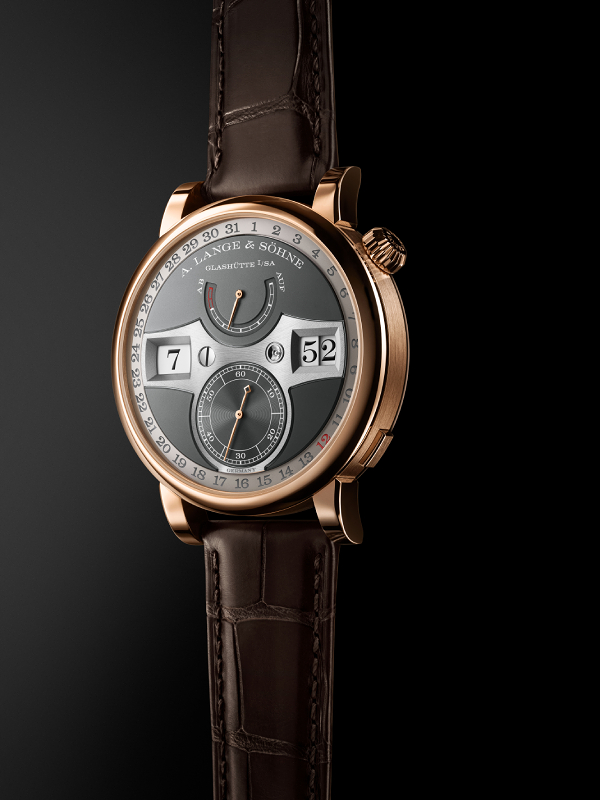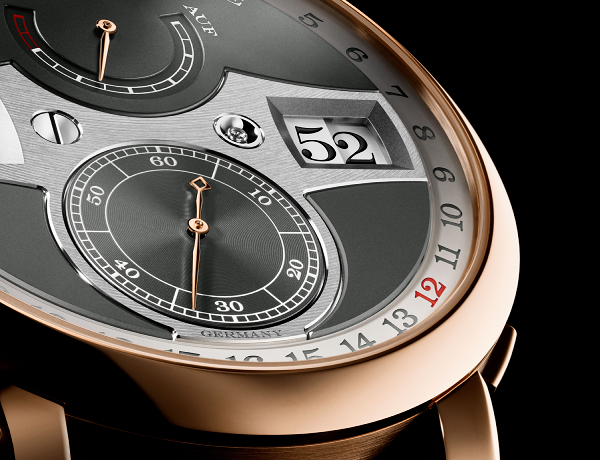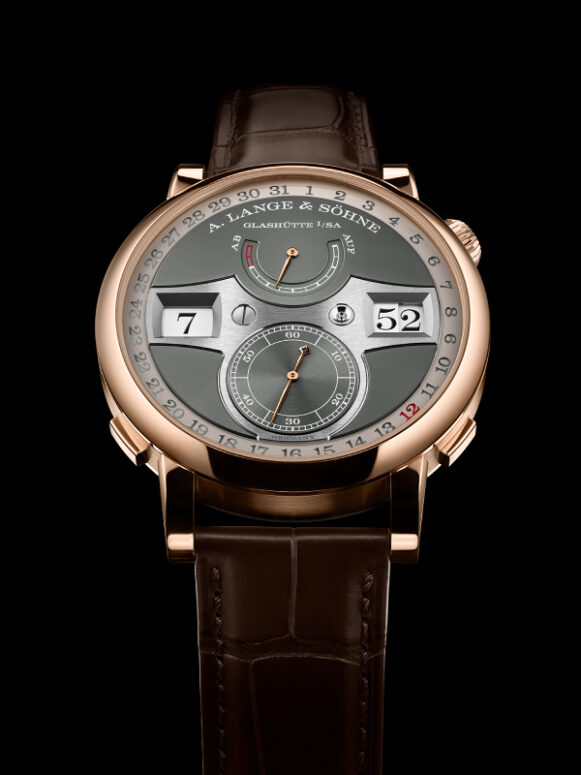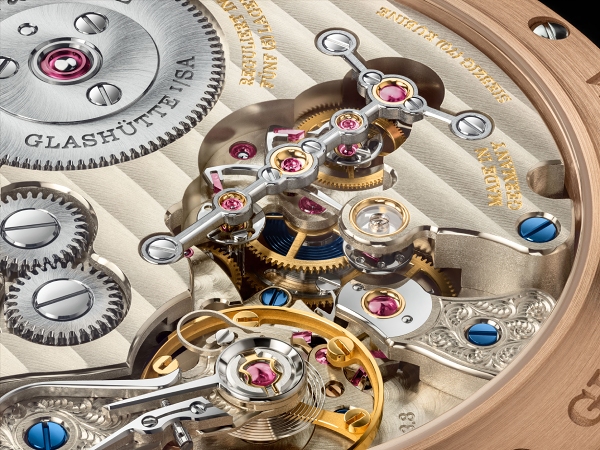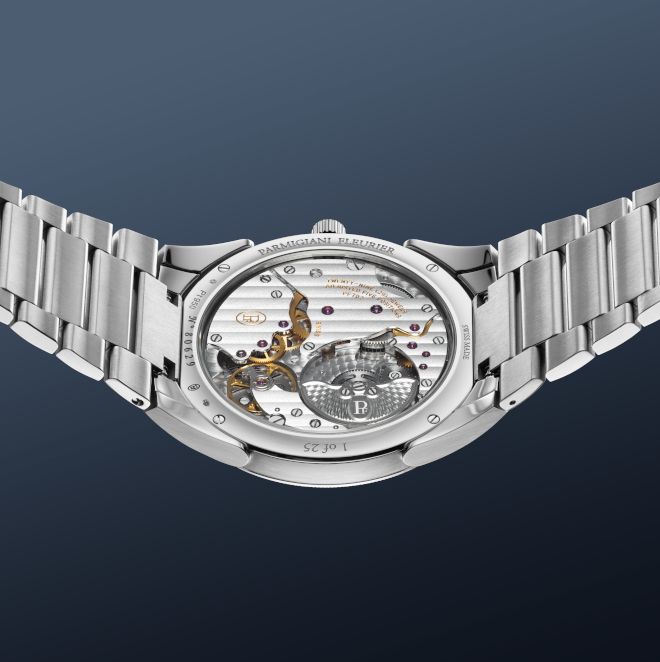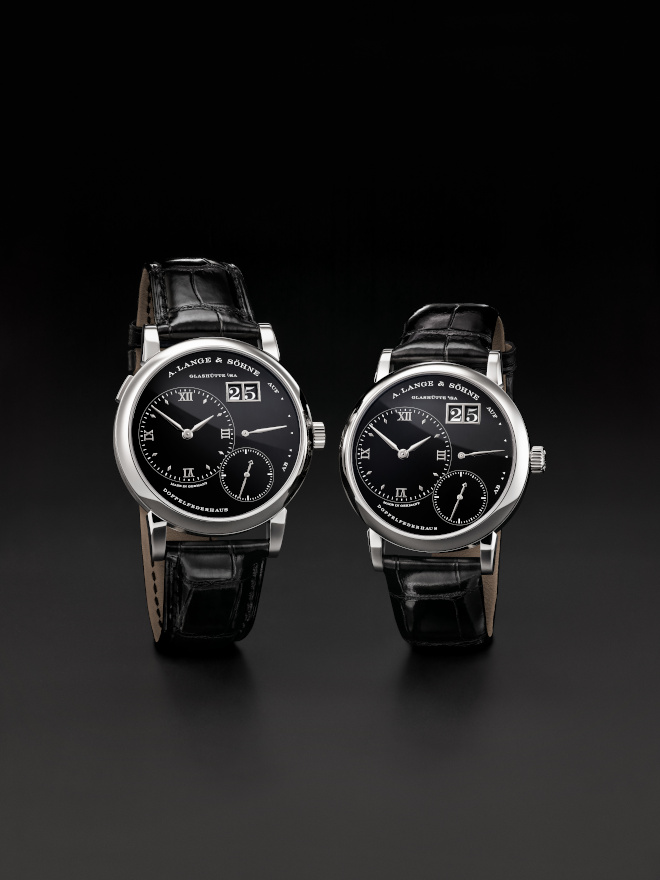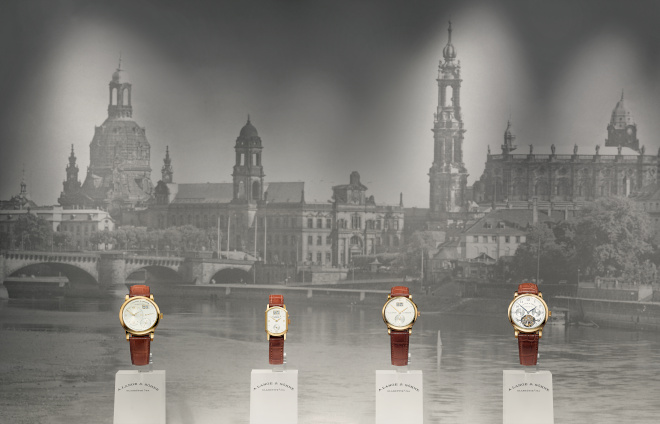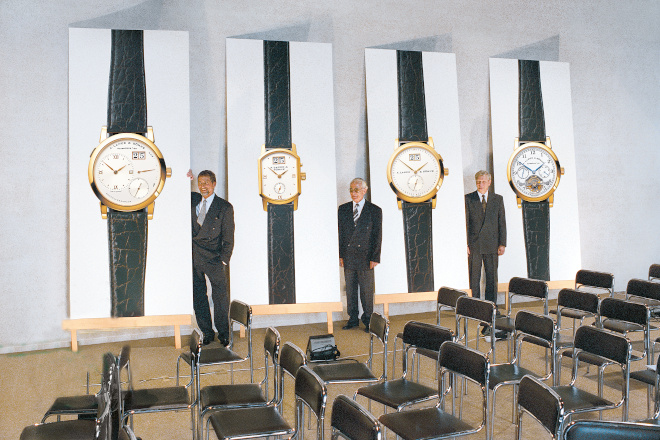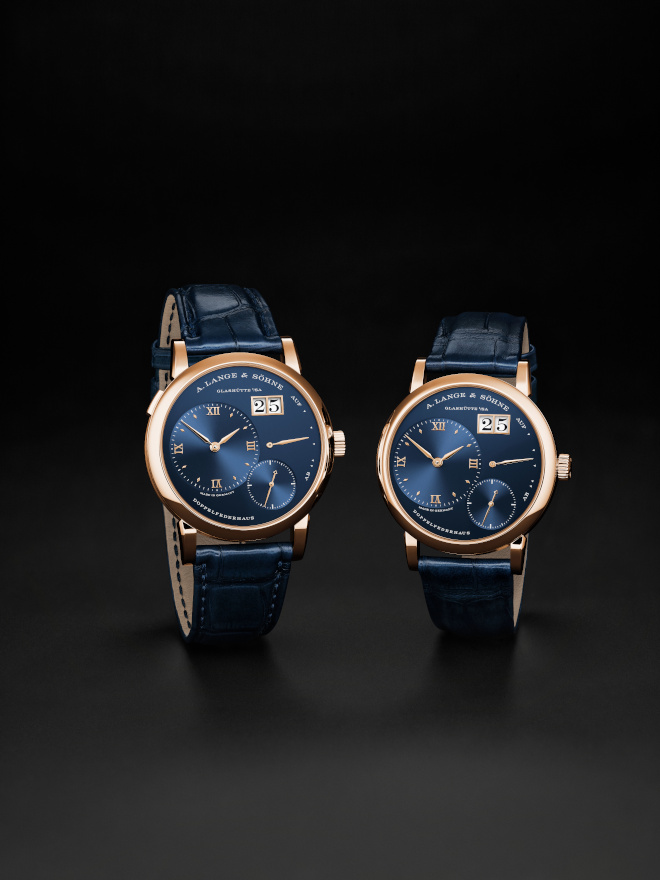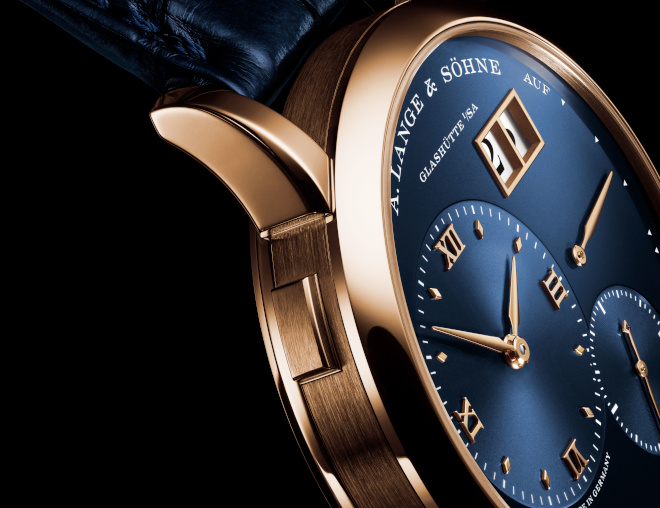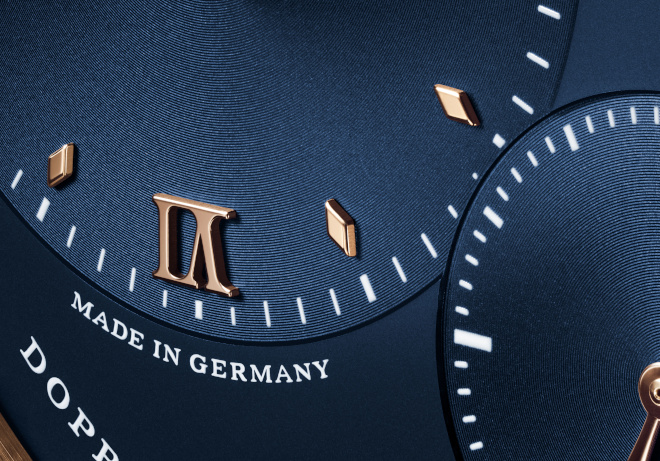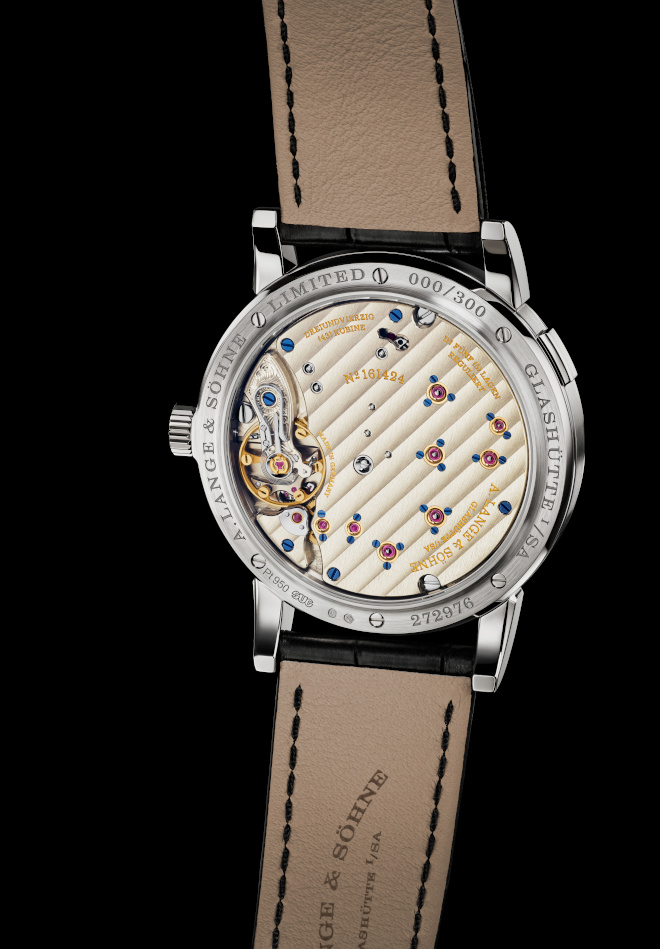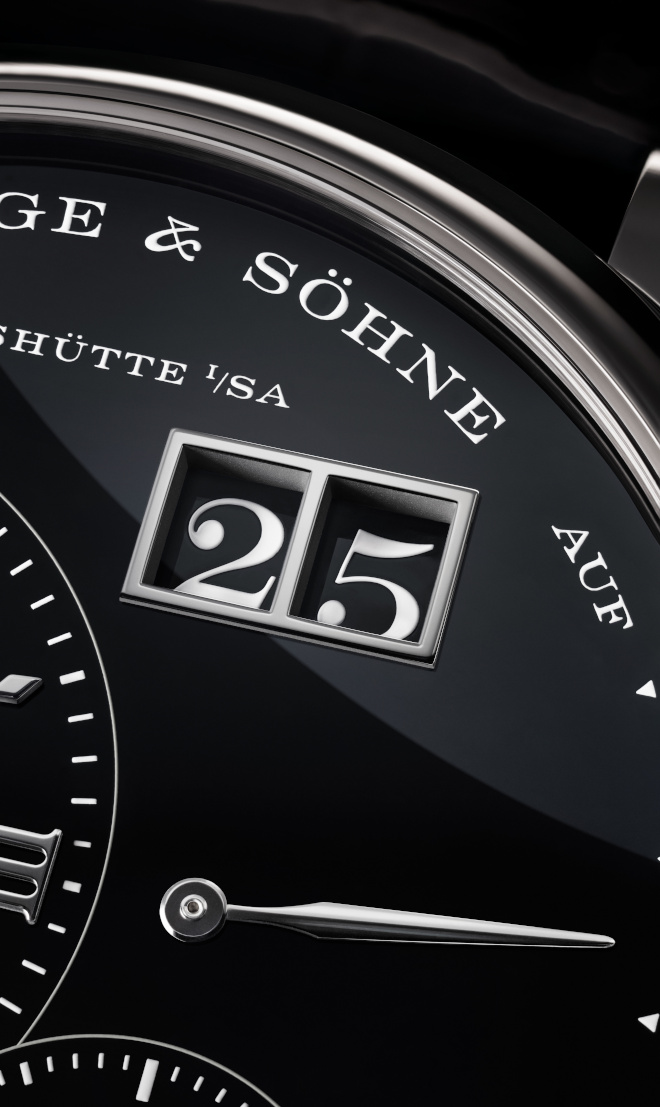The Conversation: Engineering Success
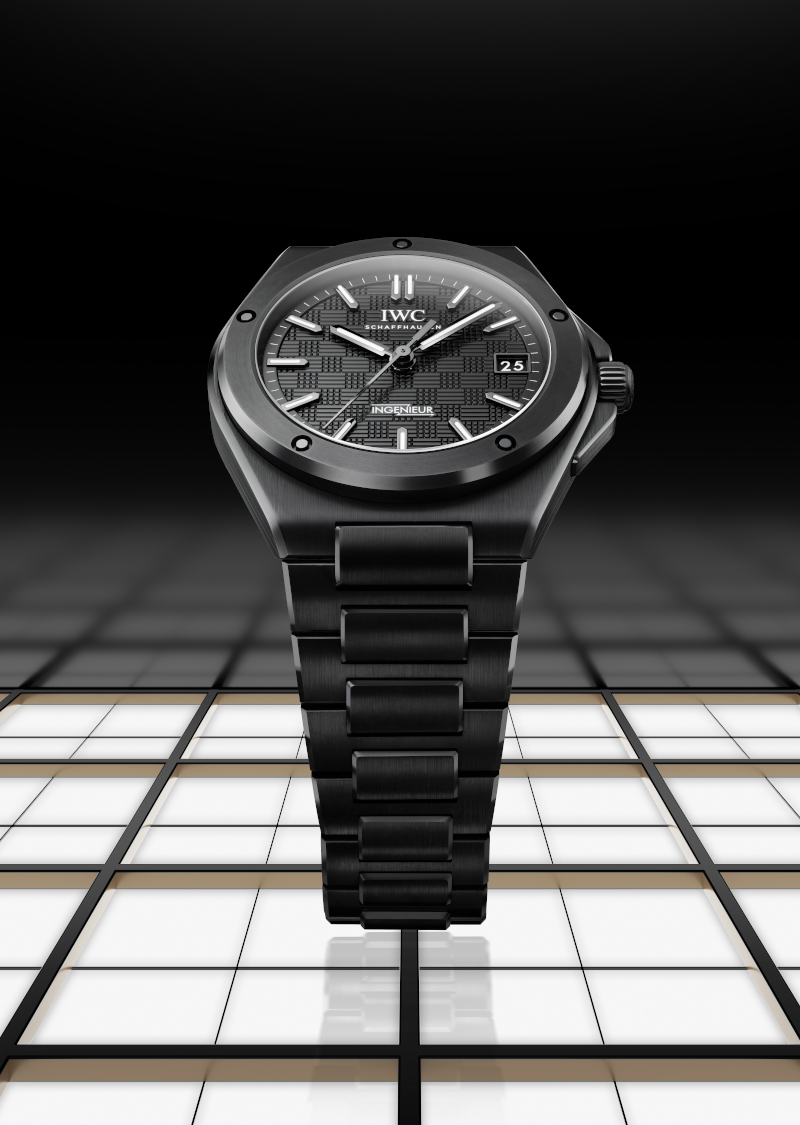
Watches often evolve in unpredictable ways, especially if they were made to fulfil some kind of need or requirement. If said needs and requirements change, so too does the watch, or watches, in question. Take for example the IWC Ingenieur, which is experiencing a major revival at the moment that is very far removed from its debut 70 years ago.
That original Ingenieur watch was designed to meet the emerging challenge of navigating magnetic fields, alongside a host of other such watches. Watchmakers perceived a threat to the running of their creations from these fields, which would in fact go on to dominate our work and home environments. Hence, IWC introduced the Ingenieur with an automatic movement and an inner soft iron shell that would function as a Faraday cage. In 1955.
Even as the model went through a variety of changes, these elements remained consistent…until now that is. The editors of WOW Singapore, Malaysia and Thailand saw all the new models at Watches and Wonders Geneva this year; the Ingenieur in particular drew their attention. The collection, inspired not by the 1955 original but the 1976 Ingenieur SL imagined by the famed Gerald Genta, sparked their first discussion centred not on broad topics but on just one subject.
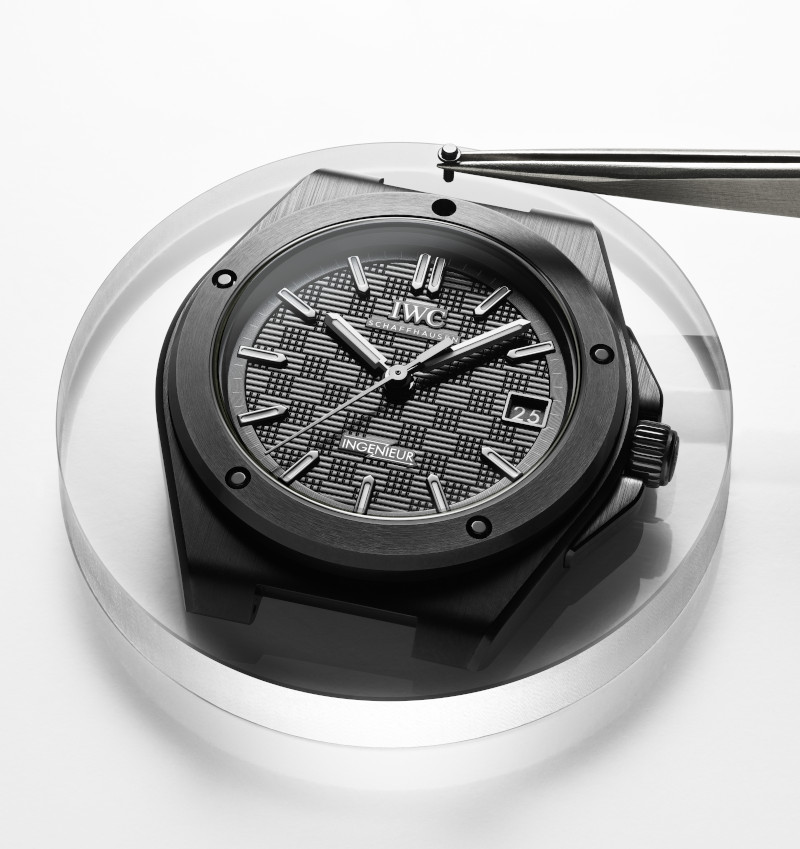
RC: Guys, we are at the beginning of something new: a brand-specific discussion among the editors!
AS: It is indeed a brand new day…in a manner of speaking. And, we’re also going collection specific. So, are we ready for the IWC Ingenieur of 2025?
RC: Presently, of all five collections listed on the IWC web site, “Ingenieur” is one of the two families named after a profession, with the other being “Pilot’s Watches”. And that reflects the focused nature or objective with which the watch was developed in the first place.
DG: I have a feeling that with such focused attention on one collection, things are about to get extremely nerdy…
AS: Nerdy? Funnily enough, we have an odd question to ponder: where to begin… The Ingenieur has had quite a number of lives and, as Ruckdee noted, it remains only the second such model (named for and aimed at a specific profession) in the brand’s history. Why is it a watch for engineers? Well, from what the brand says, it all comes down to the antimagnetic properties of the watch. The Ingenieur was literally engineered to face the challenges of an electronic world.
DG: It has such a fascinating back story. But let’s not forget, IWC is in Schaffhausen which is nearer to the German side of the Swiss border and you know the reputation that the Germans have for their engineering. It makes sense that way back when, IWC probably thought that hey, there are a lot of engineers around here; they need to tell time; magnetic inference is a problem; and we have a brilliant solution!
RC: Good point made there, Daniel. I first discovered IWC as a resolutely sober, white and black brand, with a heightened sense of engineering, and no obvious partnership or celebrity endorsement. Having said that, I have a confession to make. When I was much younger, I didn’t know that the very first Ingenieur was round! At the time, I thought the Ingenieur SL designed by Gerald Genta in 1976 was already the beginning of the collection. Then I discovered that I was not sufficiently educated, because the very first Ingenieur was in fact a round watch known as Ref. 666 in 1955 or exactly 70 years ago.
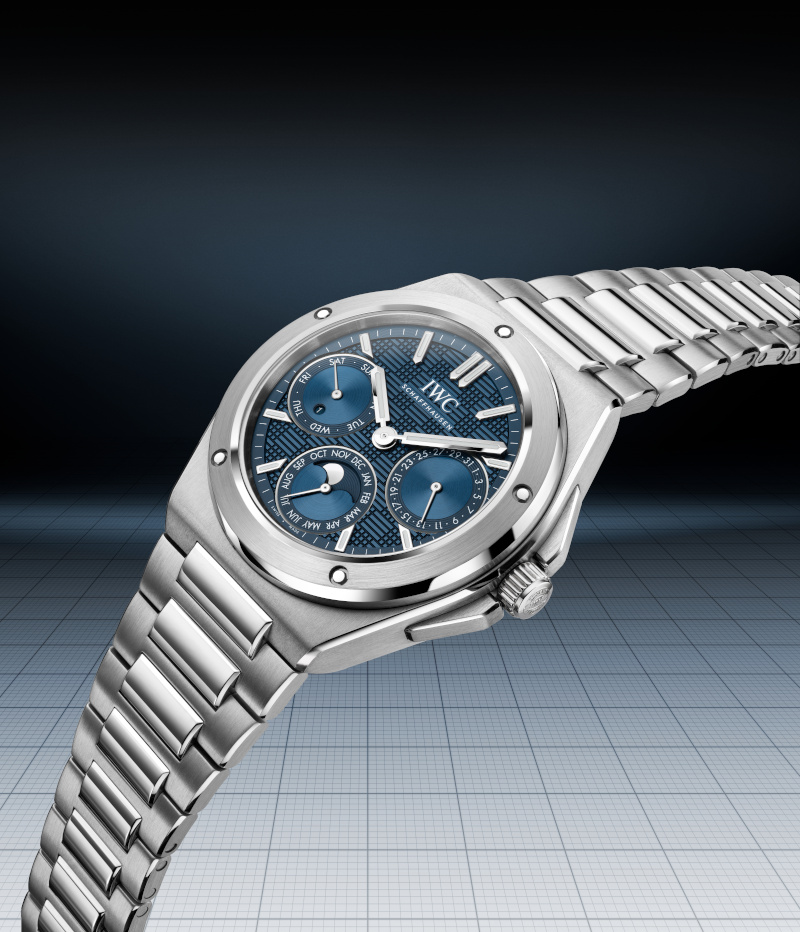
AS: IWC is very Teutonic, that is true, and it was a champion of tool watches. Still is, in important ways that are today most evident in both this collection and the Aquatimer. Where water-resistance is the name of the game in dive watches, IWC foresaw that mechanical watches needed protection from the magnetic fields of the electronic devices that were becoming ubiquitous in the second half of the 20th century. That is where the story from the original from the 1950s still plays a part, although I join Ruckdee in only recalling the 1976 Ingenieur SL.
DG: I wonder what it was that made the watch unsuccessful when it was launched in the late 1970s? Officially they say the design was too visionary, but I suppose there should be more factors in play here as well right? Could it have been the quartz watches that were probably gaining momentum around the same time? Or maybe even the asking price was too high? Does anybody know what the Ref. 1832 cost at the time it was made?
RC: No, I don’t know the original retail price of the Ingenieur SL. But I think I know why it is so collectible right now: not so many pieces were made! IWC’s latest information notes, and I quote, “With the modesty and sobriety of a tool watch manufacturer, IWC chose a different approach and marketed the Ingenieur SL exclusively to engineers in the years to come. However, for this target group, Genta’s design was simply too bold and too visionary. And so, between 1976 and 1983, only 598 pieces were produced and sold.”
AS: There are boons to making only a very limited number of pieces, especially to collectors. Now, aside from being a famous maker of tool watches, IWC is a brand that wants to sell a lot of pieces so it is perhaps unsurprising that the Ingenieur’s first run ended in the 1980s. However, there was clearly a tonne of unrealised potential in the collection as the brand returned it to the lineup as the mechanical watch revival got underway at the start of the 21st century. To be clear, the collection was quite respected when it came back but IWC has fiddled with the design a number of times before hitting its stride in 2023, when the first four models appeared in the current style.
RC: I was not a fan of contemporary, round Ingenieur watches when they made brief resurgences during that fiddling phase. So, I was very pleased in 2023 when IWC did what they did: formally re-establishing the collection on the aesthetic basis of the Genta-designed Ingenieur SL. The size is also good and safe at 40mm.
“When I was younger, I didn’t know that the first Ingenieur was a round watch known as Ref. 666 in 1955” said by Ruckdee Chotjinda, Editor-in-Chief, WOW Thailand.
AS: There are some characteristics that define the Ingenieur, particularly the Genta-era Ingenieur SL that Ruckdee referenced there. The integrated bracelet form is, of course, a key part of the winning formula, but so is the industrial vibe of the bezel and the dial. For the longest time, and until this year, it was also the presence of the soft-iron inner case that marked the Ingenieur; that was the Faraday cage, of a sort, that gave the watch its impressive antimagnetic credentials.
RC: I don’t know the average magnetic levels in our daily life or around specific devices, but the standard Ingenieur Automatic 40 in stainless steel with the said soft-iron inner case offers magnetic resistance to the level of 40,000 A/M, whereas the ISO standard requires a dive watch to be magnetic resistant to only 4,800 A/M. More superficially, I was thrilled to see how they brought back the “grid” dial of the Ingenieur SL. I think it gives yet another important signature to this highly technical collection of timepieces.
AS: Moving right along, after those four watches from 2023, the brand found its footing and decided to go all-in here. There are now 12 models in the Ingenieur collection, including its first-ever perpetual calendar model and an incredible ceramic model. Sizes now range from 42mm to 35mm, with that perpetual calendar model coming in at a unique 41mm.
DG: I am not at all surprised that IWC decided to add a ceramic model to its collection; the material is gaining traction in the industry and has been doing so in the last couple of years. What did surprise me, however, was IWC’s heritage with this material. The brand made the first zirconium oxide black ceramic case in 1986. And apparently there was also another Pilot’s watch in black ceramic in 1994. All of these were before my time covering watches but these days, I think IWC is investing heavily in developing ceramic materials. The firm has Ceralume, which successfully integrates Super-LumiNova® pigments into ceramic, and the collaboration it did with the German Aerospace centre introduced fibre-reinforced ceramic as a viable material. So, I think it was only natural that IWC brought its expertise with ceramic to the Ingenieur collection. And I suppose with ceramic being a non-magnetic material, this fits into the whole antimagnetic ethos of the Ingenieur.
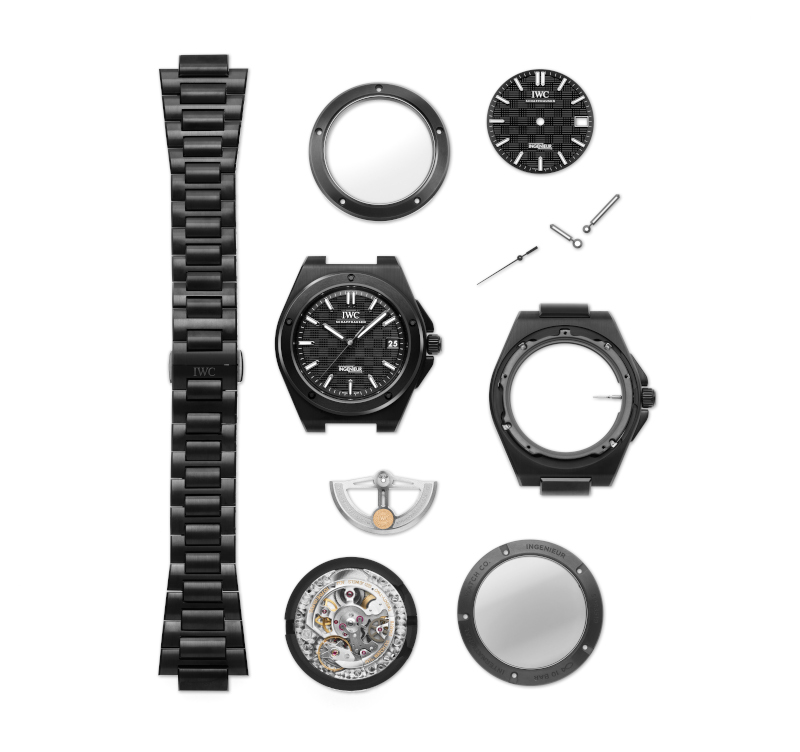
AS: You know, people do say it is all about details in fine watchmaking, which is what IWC does these days, and the new ceramic Ingenieur gets it right. I was surprised to learn that the crown and crown guards are also in ceramic, and so is the caseback. As you know, although we did not say it properly for the record, the five screws visible on the bezel are functional, connecting the three parts of the case to each other. The Ingenieur has only featured this as a key element now, with the 1976 debut going with a different case structure, and it is important to the feel of the reimagined watch. This sort of thing is part of the reason that ceramic watches often do not have ceramic casebacks. I presume this is something IWC wanted to figure out before getting into ceramic here because Daniel is right to note the general proficiency the brand has demonstrated with ceramic (since 1986 with reference 3755 in fact but we will get to that shortly).
RC: One thing caught me by surprise, though, and that is the size of the new ceramic Ingenieur. Unlike the Ingenieur Perpetual Calendar 41 with extra indications to display, the Ingenieur Automatic 42 in ceramic is a three-hander so, at first, I didn’t know why it had to be 42mm when it could have been in the same 40mm size as the models in stainless steel and titanium. My initial guess was that it was due to complications with the case construction and ceramic parts and all. But then I looked closer and discovered that a totally different movement was used! The Ingenieur Automatic 42 in black ceramic is powered by the larger Calibre 82110, which is also visible through the tinted sapphire crystal caseback. The Ingenieur Automatic 40 in stainless steel or titanium is equipped with Calibre 32111, which belongs to a totally different IWC movement lineage, not hidden behind the closed case back.
DG: You know you still could be right. It could be due to the complications with the case construction that they have to use a different movement. Additionally, it could also be that because the ceramic is in black, they needed to use a larger case to give the watch the intended appearance on the wrist. Maybe a fully black 40mm watch would look closer to a 38mm on the wrist?
“I think it was only natural that IWC brought its expertise with ceramic to the Ingenieur collection. After all, it is a non-magnetic material”— Daniel Goh, Editor-in-Chief, World of Watches, Malaysia
RC: This is why I like chatting with you guys. You expand my perspectives! While we won’t know for sure until we ask IWC what its intentions or constraints were with regard to the ceramic Ingenieur being larger than the rest, it is cool to ponder at the possible reasons and the effects they bring. I, for example, didn’t think about the effect where a black ceramic 40mm watch has the potential to look smaller than its measured size. But I agree that, as things stand now, the current Ingenieur watches in different materials look appropriate for their respective persona. Ashok, what do you think?
AS: I like the story of the ceramic model, and how IWC had to come up with neat engineering solutions to make the case construction work. Also, the little things such as the aforementioned crown and guards – having these made in matching black ceramic is going the extra mile. You only need to imagine how specific this process is – only this model uses such components, in the entire IWC range. This kind of production fastidiousness (and ultimately, exclusivity) is what fine watchmaking is all about. If you really consider it, the case (and components) of this 42mm watch is worth an entire article, and we did toy with that idea right here before going in this direction. As for the size, I think it was the decision to use the Calibre 82110 movement that defined it, and probably some sort of consideration on minimum sizes for water-resistance and perhaps even those little components! Truth be told, integrated watches wear a bit bigger than you might expect so I would love it if there was a 40mm version but, on the other hand, some differentiation is very desirable. To finish here, I wish that the dial was also in ceramic, with this same design (i.e. the grid pattern) of course! Something to look forward to perhaps, and more realistic (maybe) than a smaller size…
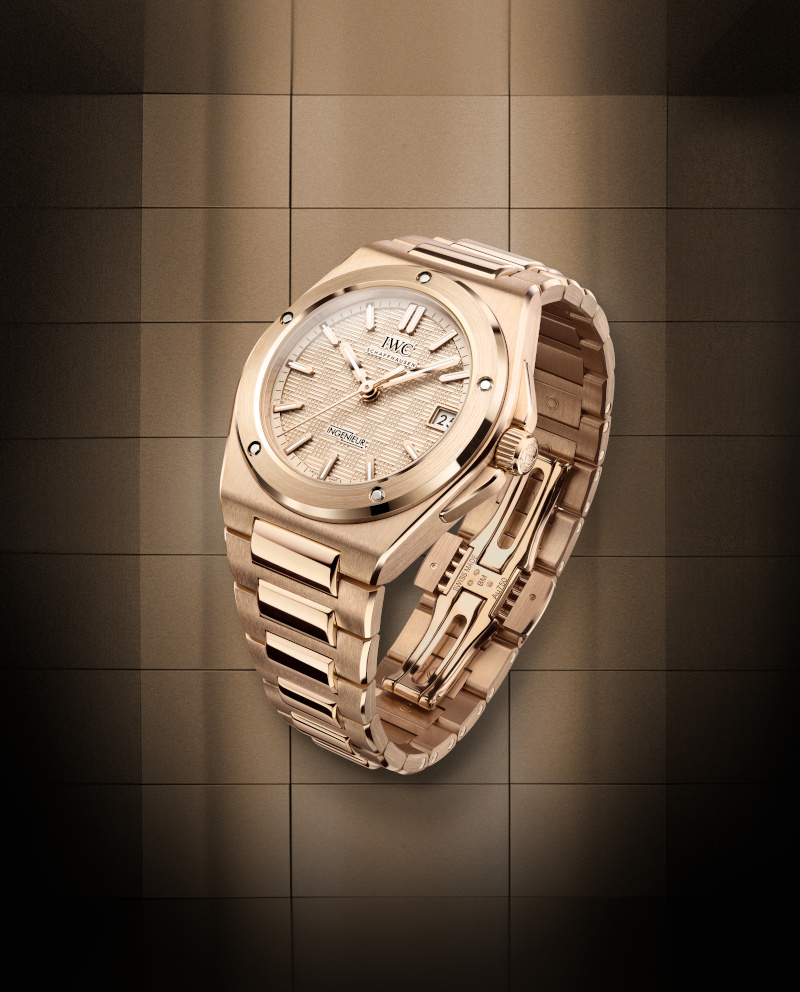
DG: I second that idea for a dial in ceramic. IWC, if you are reading this…
RC: It’s not a must for me. But if they can make a ceramic dial without losing the grid pattern then I am in, otherwise I would prefer for the dial to stay as is. So what is your favourite, current model Ingenieur then? Daniel? I do like the new Ingenieur Automatic 42 in black ceramic and my wrist can take the size, but I am still partial towards the Ingenieur Automatic 40 in stainless steel with Aqua dial which I find to be quite refreshing – it is not too green and already not blue.
DG: Anyone who knows me will know that although I love the technical complexities of making a material like ceramic (pressure and fire, what’s not to like?) I think the size will be a tad bit big for my personal tastes. So, for that reason, I think the new 35mm Ingenieur is a pretty compelling release from the brand this year. And if we are talking full fantasy, how about that 35mm Ingenieur in full 18K 5N gold. How baller is that?!
AS: I do like the smaller releases here, again mainly because of that whole integrated bracelet thing. Also, great that IWC went with yet another movement for the smaller models, Calibre 47110; this does wonders for that model differentiation that I keep harping on. All too often, brands will just go with one movement in cases of multiple sizes and that irks me, as it does Ruckdee too! I think the decision to have every size and specification (the ceramic model and the perpetual calendar) in the new Ingenieur range have its own movement is a deft touch, even if it probably was not decided in this way.
“I applaud the decision to equip every size and specification in the Ingenieur range with distinct movements” — Ashok Soman, Editor-in-Chief, WOW Singapore
RC: Oh, don’t get me started on an open case back with a much smaller movement than case. We don’t have the pages for my rant. But where the Ingenieur is concerned, so far everything is proportionate and well-thought-out to me. They have regular, smaller and larger case sizes. They have steel, performance materials and noble metal. And, with the perpetual calendar being added this year, even before there is a chronograph, we can anticipate the latter next year, perhaps.
AS: I am pretty sure that we can expect more in ceramic from the Ingenieur, given the history of material innovation at IWC. Not at all a stretch to see a perpetual calendar in the mix, especially since IWC introduced ceramic to watchmaking with a perpetual calendar in 1986, although in the Da Vinci line. And the brand does have some expertise in making complicated watches in materials such as ceramic, and of course hybrids, including Ceratanium. Honestly, the Ingenieur collection is just brimming with potential on the material front. And yes, the thought of IWC introducing a chronograph with ceramic pushers did occur to me too, mostly because the Pilot’s Watch Performance Chronograph Perpetual Calendar Digital Date-Month already has such a thing, but in Ceratanium!
DG: It is exciting, isn’t it, when a brand introduces a new collection, especially one with such a cool origin story and more importantly, with a design that can speak to contemporary tastes. The expansion of the line has already begun and I am sure if you look at IWC’s playbook, the gears are already churning for the next few releases. Predictably we will probably see line extensions for the newly launched references in the coming years but I am pretty sure that there will still be a few surprises up IWC’s sleeve. I wish IWC would do a limited-edition reissue of the original SL reference 1832 but it seems highly unlikely. Even the watch they put on Brad Pitt’s wrist for the shooting of the film – F1 – was apparently a modified version of an original watch. But, one can dream right? In any case, it is great to see the positive reception of the Ingenieur and I am definitely looking forward to covering its future.
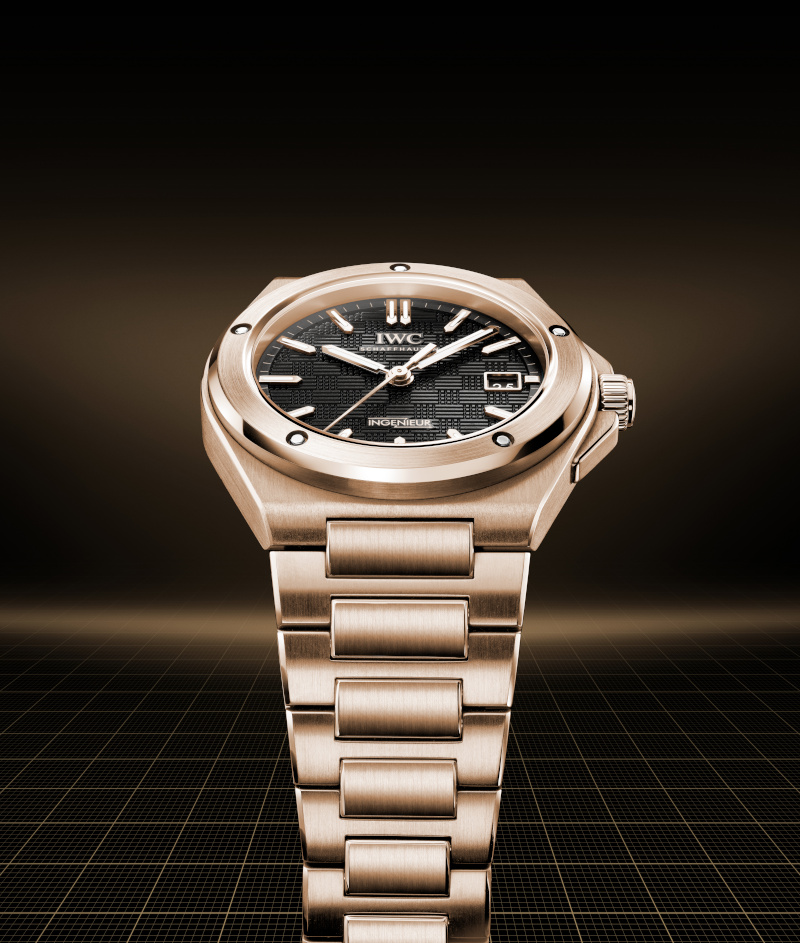
This story was first seen as part of the World of Watches Malaysia Summer 2025 issue
